This July, LET’S LEARN ABOUT…Racial Harmony Day!
Racial Harmony Day is held annually in Singapore on 21 July. On this day, Singaporeans celebrate our diverse, cross-cultural character, and reflect on the importance of fostering harmony and understanding among all communities in our nation.
WHY IS RACIAL HARMONY DAY IMPORTANT?
Racial Harmony Day was launched in 1997 as part of Ministry of Education’s National Education programme. It is an important reminder that we as a small nation must all work together to continue to grow Singapore and allow everyone a chance to play a part.
HOW IS RACIAL HARMONY DAY CELEBRATED IN SCHOOLS?
Schools commemorate Racial Harmony Day each year by organising activities that celebrate the diverse cultures and cross-cultural communities in Singapore. Students are encouraged to dress up in traditional outfits. Traditional snacks are eaten, and games such as batu Seremban (five stones) and capteh are played. These activities are just a few of the ways students are exposed to the cultural beliefs and practices of communities other than their own. Learning more about other cultures and traditions enables us to respect and appreciate all people, and can also help build and strengthen friendships.
What activities does your school organise during Racial Harmony Day? How does it help you respect and understand other cultural communities in Singapore?
OBJECTS FROM OUR COLLECTION
Singapore’s role as a port city attracted people from all around Asia and the world. To celebrate Racial Harmony Day, let’s take a look at some outfits from the ACM collection that highlight the diverse cultures and cross-cultural communities found here in Singapore.
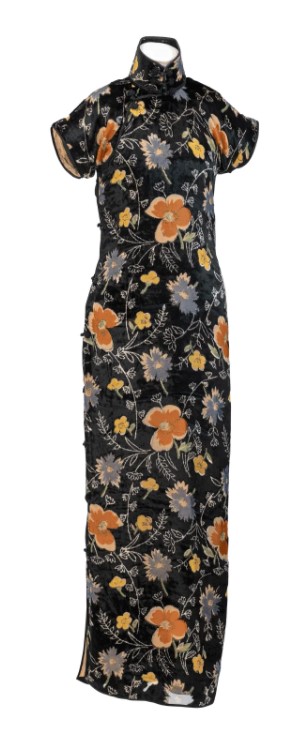
|
Qipao
China, 1930s
Silk velvet (devoré velvet), silk lining
On loan from the Chris Hall Collection
|
Have you seen women wearing this type of outfit before? This is a qipao (cheongsam in Cantonese), which usually has a high collar, side slits, and fastenings at the collar. The qipao was popular in Shanghai, China, starting from the late 1920s and also became popular among women of the Chinese diaspora (Chinese living outside of China) in the Straits Settlements, including Singapore and Malaysia.
Large floral designs, a western-style, like on this black qipao were popular in the 1930s. Sleeves were shortened to “cap sleeves”, and the form became closer to the natural shape of the body.
Earlier styles had long sleeves and were more loose-fitting and long, reaching the ankles. Modern ones we see today have a variety of cuts, including sleeveless, shorter lengths, and tight-fitting styles.
Look for this qipao in our virtual Fashion and Textiles Gallery here.
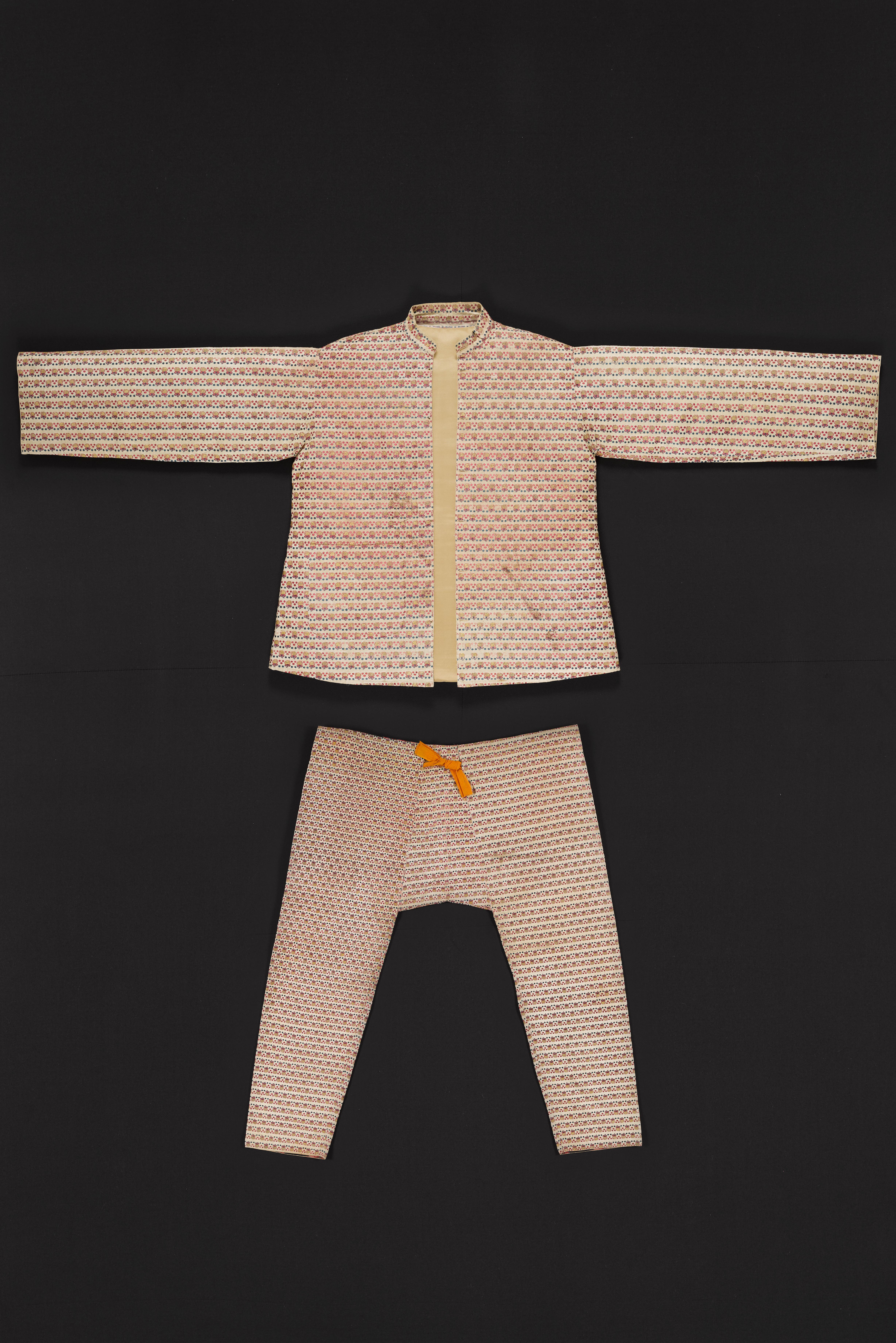 |
|
Tunic and trousers (baju and seluar Melayu)
Riau-Lingga Archipelago (Indonesia), ca 1860–70
Songket in Indian cotton, with silk and metallic threads
G-0007
|
The baju melayu is a traditional Malay attire for men. It is said to have originated in the court of Melaka in the 15th century.
This particular baju melayu was made in Indonesia, and is believed to have been worn in the 1860s by Sultan Abdul Rahman Muazzam Shah II (reigned 1883–1911), the last sovereign of the Sultanate of Riau-Lingga, for his wedding.
Although it was made by tailors in Indonesia, the cloth used to make it came from Gujarat in India. Indonesia has imported Indian textiles since at least the 9th century, cherishing them for their beauty and quality.
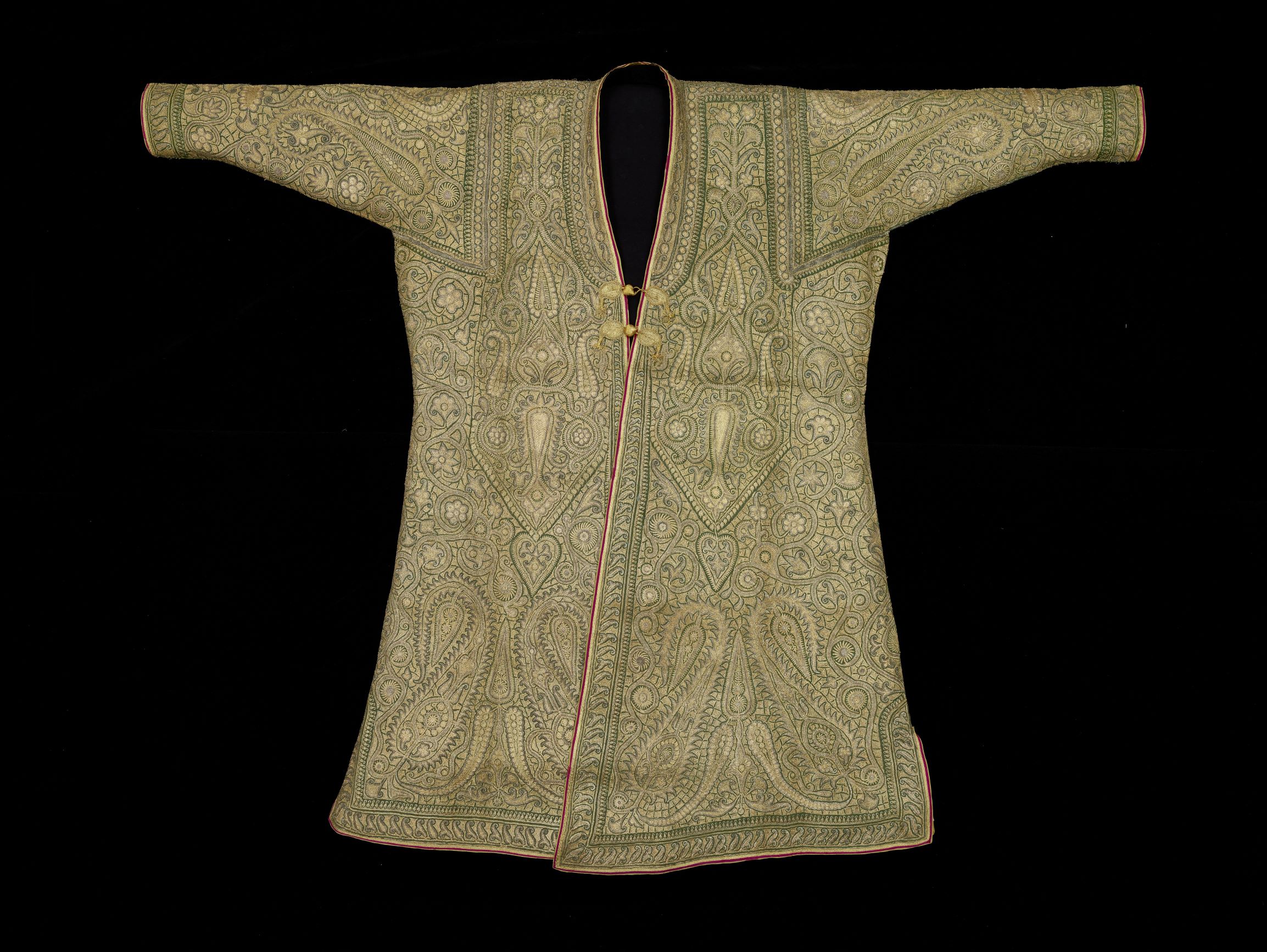 |
|
Choga
India, Kashmir, around 1855–75
Wool, silver- and gilded silver-wrapped thread
2020-00025
|
The choga is a long-sleeved, loose-fitting garment that was worn by men in 19th-century India. It served as an outer garment that was layered over thinner articles of clothing like the angarkha, jama, or kurta. This woollen choga was made in Kashmir, a northern region on the Indian subcontinent known for the quality of its hand-spun wool.
If you look carefully, you’ll see that it is decorated with droplet-shaped designs that might remind you of mangoes. This motif is called paisley in English, and ambi in Punjabi, where it means “mango”. It is a common design on Indian textiles.
You can find this choga in our Fashion and Textiles Gallery on Level 3.
Kebaya
Indonesia, 1930s or 40s
Cotton voile and machine-made embroidery
Peranakan Museum
Gift of Mr and Mrs Lee Kip Lee
2011-01262
Sarong
Eliza Charlotte “Lies” van Zuylen (1863–1947)
Java, Pekalongan, 1930s
Cotton, drawn batik, chemical dyes
2015-02116
The Peranakan-style kebaya is a long-sleeved blouse with a V-shaped lapel and an open front, reaching to about waist-length. It is usually decorated with embroidery and lace on the frontal and outer hems, as well as the fringes of the sleeves. When fastened together by a set of three kerongsang brooches at the front, the kebaya shows a V-shaped neckline.
Kebayas are worn with an inner camisole, and usually paired with a sarong, which is a rectangular piece of dyed cotton cloth worn as a skirt by wrapping it around the waist. Although worn by others, these garments became a distinctive part of the identity of Peranakan women.
The fine lace embroidery on this white kebaya was done using a sewing machine. Look closely to see flower designs on the lace at the fringes. This batik sarong is decorated with large sprays of flowers in grouped together in a bouquet, with birds and butterflies around them.
Both pieces are displayed in our Fashion and Textiles Gallery on Level 3.
PLAY
Can you find someone for each of the activities on the card below? Tag us @ACM_SG to share what racial harmony means to you. Click here to download and print at home.
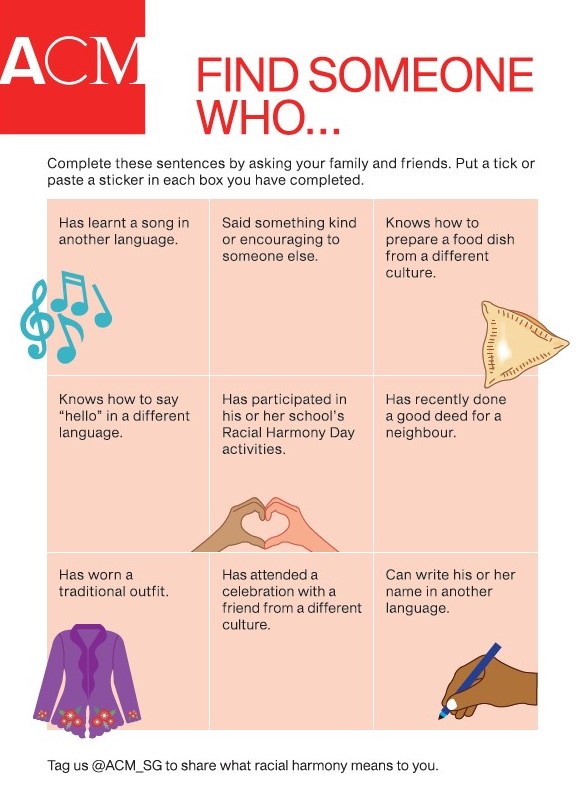
CREATE
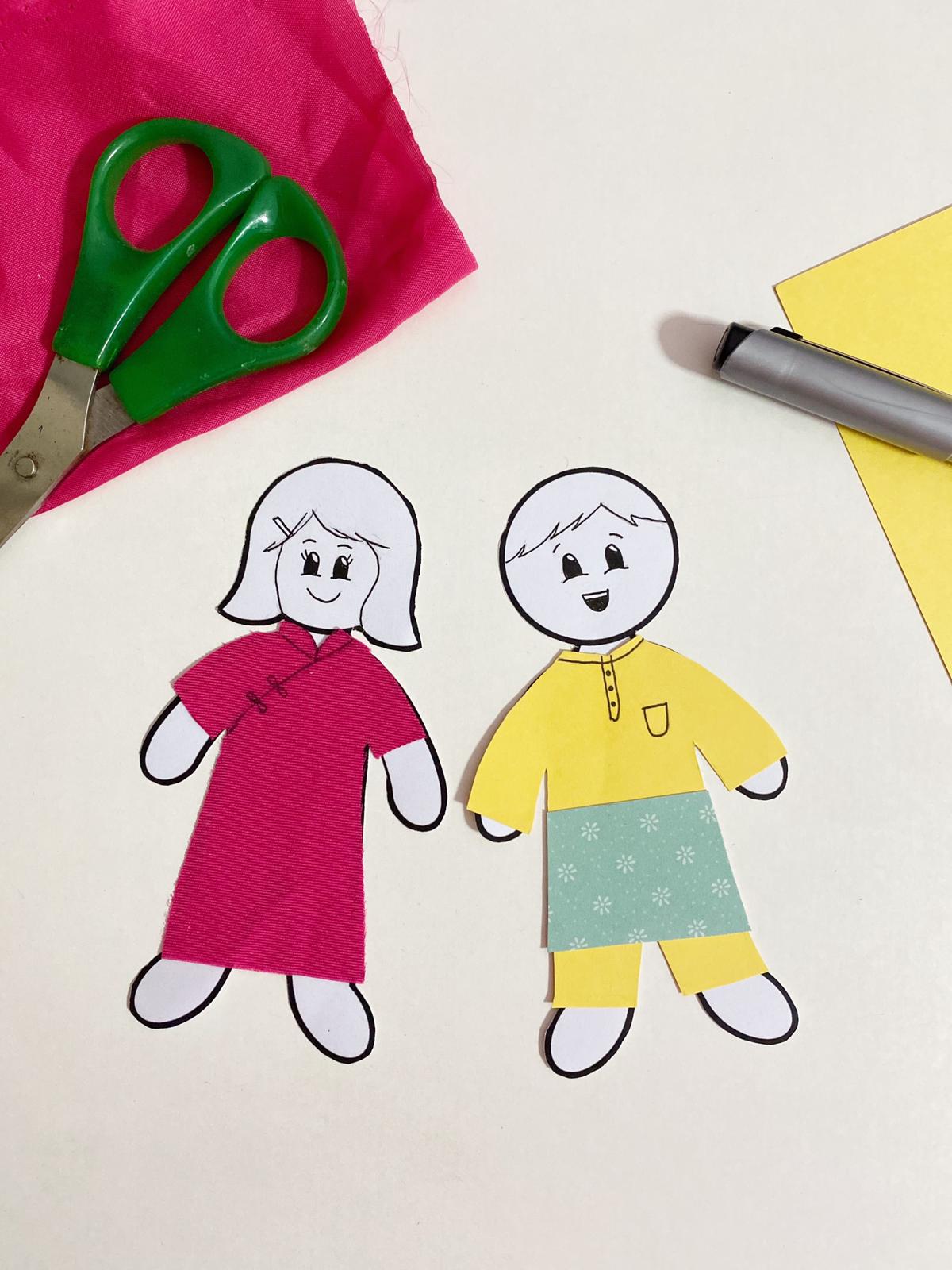
Craft made by ACM staffer Tan Yuan Lin
Using the template provided below, put together an outfit that takes inspiration from ACM's collection. You can use coloured paper, scrap fabric, ribbons, or any other materials you might have around the house. Tag us @ACM_SG #LearningatACM to share your designs with us, and for a chance to get your creation featured on ACM social media.
Click here to download template.
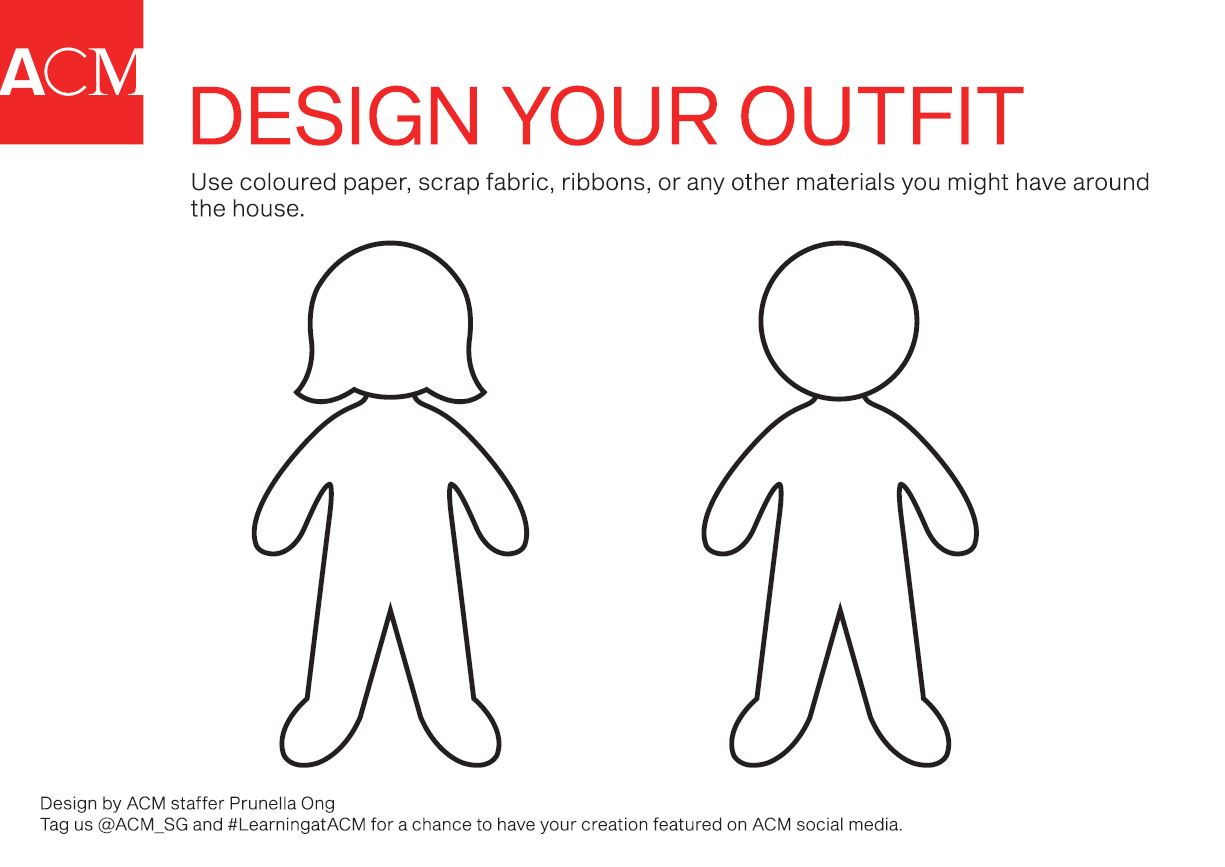
EXPLORE
Head to NHB’s one-stop heritage portal Roots.sg to read more about the objects featured:
Tunic and trousers (baju and seluar Melayu)
Kebaya
Sarong
Want more of these resources? Come back to learn new things every month.
Missed a monthly post? Not to worry, we keep past topics here for you.
What else would you like to learn about? Tell us here.
There’s more!
Check out other videos and download e-resources inspired by the objects in ACM’s collection.